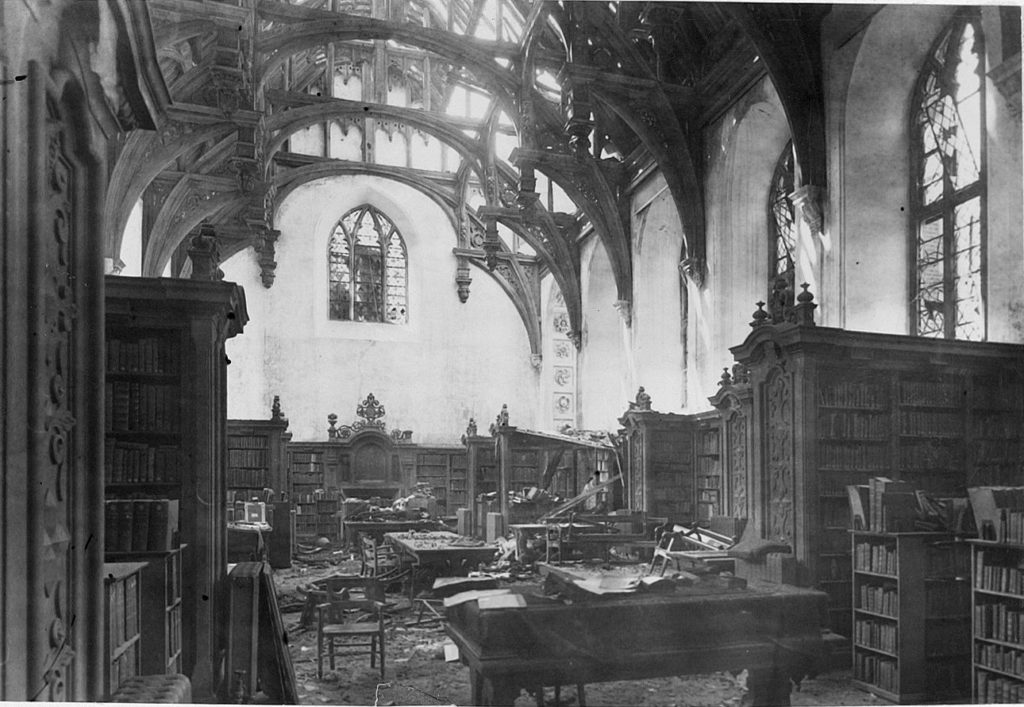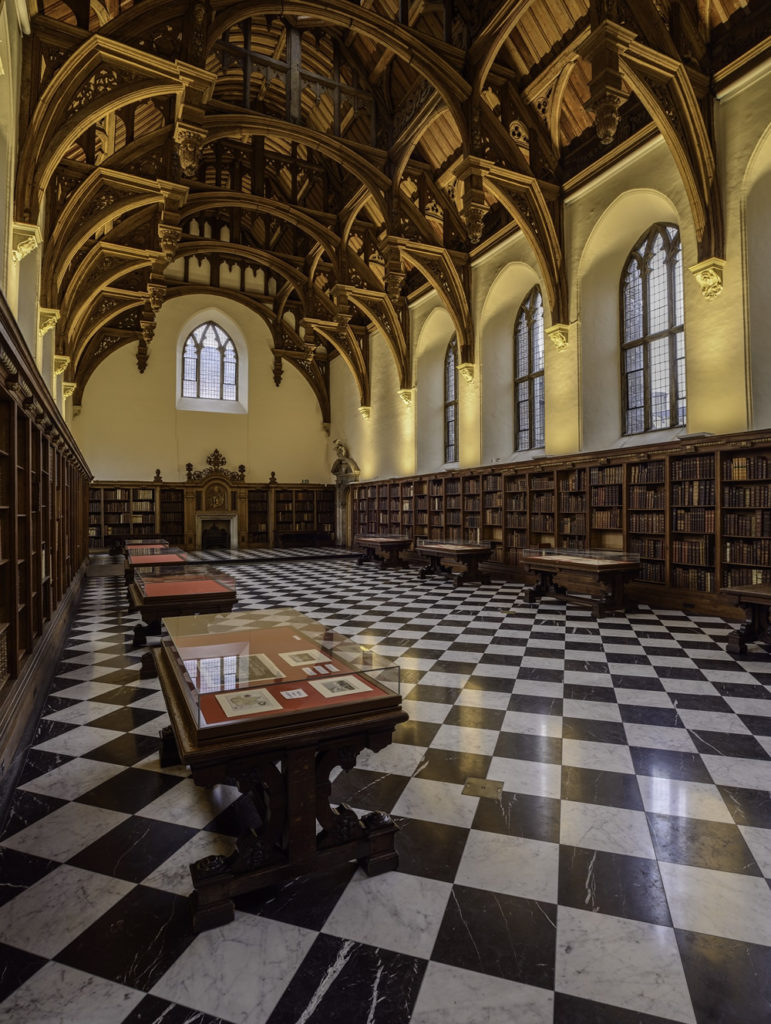Foundation and early years
Lambeth Palace Library is the historic library and record office of the Archbishops of Canterbury and the national library and archive of the Church of England. Its collections have been freely available for research from 1610, when it was founded under the will of Archbishop Richard Bancroft.
Bancroft bequeathed to his successors a collection of around 5,600 printed books (many deriving from his predecessor Archbishop John Whitgift) and about 500 manuscripts. His successor, George Abbot, arranged for the first catalogue to be compiled, enlisting the aid of King James I himself, who saw the new Library as ‘a monument of fame’ in his kingdom. Archbishop Abbot, in his turn, left over 2,500 books and 50 manuscripts to the Library. All three archbishops had been able to take advantage of the unprecedented book-collecting opportunities offered by the dispersal of the monastic libraries in the sixteenth century. Lambeth Palace Library soon became one of the most important libraries in England.
Following the royalist defeat in the Civil War and Parliament’s confiscation of Lambeth Palace, Cambridge University petitioned Parliament to have the Library. By then it numbered around 9,000 volumes and these were sent to join the collections of the University Library in Cambridge, probably in 1648. At the Restoration, Archbishop Juxon called for the books to be restored to Lambeth, but he did not live to see their return in 1664, during the time of his successor, Gilbert Sheldon. Archbishop Sheldon rebuilt the Library’s accommodation, around the cloister, and also bequeathed his own books and manuscripts. During the rest of the seventeenth and eighteenth centuries some archbishops, such as William Sancroft, Thomas Tenison and Thomas Secker, took a keen interest in the Library. Their librarians, Edmund Gibson, David Wilkins and Andrew Coltée Ducarel, organised the collections and provided some continuity. Many of Tenison and Secker’s books and papers remain at Lambeth, although the important collections of Sancroft himself and of Archbishop William Wake went elsewhere.
The Library from the 19th to the present
The first half of the nineteenth century saw further growth of the collections. Archbishop Manners-Sutton was responsible for the purchase in 1806 of the Greek manuscripts collected by J.D. Carlyle and also deposited his own committee papers relating to the insanity of King George III. Printed catalogues of the Library were produced – of manuscripts, by Henry Todd, in 1812 and of early printed books, by Samuel Roffey Maitland, in 1843 and 1845. The Library changed physically too, when Archbishop Howley commissioned the architect Edward Blore to rebuild Lambeth Palace. Many of the old buildings were demolished and the Library was transferred to the Great Hall, the seventeenth-century former banqueting hall, in 1830.


The middle of the century marked the beginning of a long period of decline, owing to chronic underfunding. The Library had been financed from the revenues of the Archbishops’ estates, but after 1836 these revenues passed into the control of the Ecclesiastical Commissioners. From the 1860s onwards, the Commissioners allocated annual grants for running the Library. Although these gradually increased, they were generally inadequate. By the early twentieth century the costs of an assistant were being met partly out of the Librarian’s own pocket, though it was reported that he could not afford a boy old enough to carry the heavier books.
The Library was badly damaged during World War II. In 1941, incendiary bombs hit the Great Hall, damaging or destroying about 10,000 books. The chaos that ensued might well have marked the end of Lambeth Palace Library, but instead it eventually ushered in what amounted to a re-foundation. With the help of the Pilgrim Trust and the determined support of Archbishop Fisher, the Great Hall was restored, books were repaired and a new reading room was created.
In 1953, the Library was redefined as the main special library for the history of the Church of England, with additional responsibilities as a repository and research centre for Church of England archives. In 1996 it also took into its care the substantial pre-1850 manuscript and printed collections of Sion College library (founded 1629), the historic library of the City of London clergy. Lambeth Palace Library’s move to a purpose-built new building, which opened in 2021, has provided the opportunity to unite its archival collections with those of the former Church of England Record Centre and will ensure that all the Library’s collections are preserved in the best conditions and made more widely available in the future.


“Nothing in England astonished me as much as Lambeth Library – I had never thought there were so many books in all the world.”
– Peter the Great

